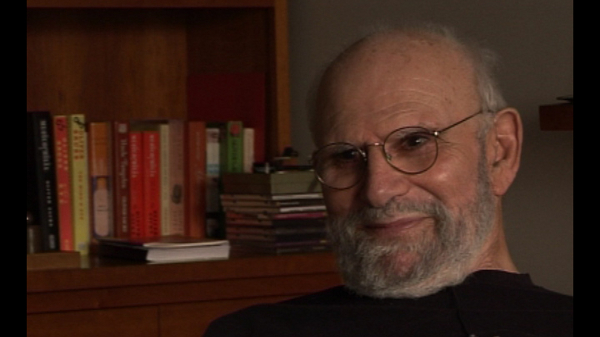NEXT STORY

Putting on weight on the set of Awakenings
RELATED STORIES

NEXT STORY

Putting on weight on the set of Awakenings
RELATED STORIES


|
Views | Duration | |
|---|---|---|---|
| 161. Jerome S Bruner's review of A Leg to Stand On gave me... | 259 | 00:42 | |
| 162. 'The Scientist as poet' – Lewis Thomas | 325 | 01:08 | |
| 163. 'The Lewis Thomas crisis' | 303 | 01:26 | |
| 164. Another accident | 252 | 03:02 | |
| 165. Learning to be a concise writer | 274 | 01:07 | |
| 166. The Man who Mistook his Wife for a Hat on the radio | 269 | 00:37 | |
| 167. Being approached to make a film about Awakenings | 298 | 02:45 | |
| 168. Robert De Niro and Robin Williams visit me for... | 985 | 04:20 | |
| 169. Robert De Niro's acting style for Awakenings | 462 | 01:43 | |
| 170. Putting on weight on the set of Awakenings | 335 | 01:12 |


But I spent, in general, much more time doing the filming with De Niro. I was the technical consultant, whatever that means. Actually I was the neurological consultant, I would... I would get to the set very early. For example, the question came up: how does someone with Parkinson's with no postural reflex – they may fall suddenly – what does a fall look like? And I was... I was describing this to Bob and how suddenly and heavily and limply the person falls, and at that moment, suddenly and heavily and limply, he fell on me and almost knocked me over. And at that point I thought: that's not acting. I thought he had somehow himself suddenly lost all his postural reflexes and had become Parkinsonian on the spot.
I... I'm... all through the filming, and sometimes I'm... when we were having dinner afterwards it wasn't very visible above the tablecloth, but I might see if I looked down that his foot was still turned in, the way Leonard L's foot was turned in, in the daytime, that he hadn't, sort of, liberated himself from the persona. I became afraid that if one acted Parkinsonian with sufficient intensity that one might in fact destroy the basal ganglia and become... become Parkinsonian.
Oliver Sacks (1933-2015) was born in England. Having obtained his medical degree at Oxford University, he moved to the USA. There he worked as a consultant neurologist at Beth Abraham Hospital where in 1966, he encountered a group of survivors of the global sleepy sickness of 1916-1927. Sacks treated these patients with the then-experimental drug L-Dopa producing astounding results which he described in his book Awakenings. Further cases of neurological disorders were described by Sacks with exceptional sympathy in another major book entitled The Man Who Mistook His Wife For A Hat which became an instant best seller on its publication in 1985. His other books drew on his rich experiences as a neurologist gleaned over almost five decades of professional practice. Sacks's work was recognized by prestigious institutions which awarded him numerous honours and prizes. These included the Lewis Thomas Prize given by Rockefeller University, which recognizes the scientist as poet. He was an honorary fellow of both the American Academy of Arts and Letters and the American Academy of Arts and Sciences, and held honorary degrees from many universities, including Oxford, the Karolinska Institute, Georgetown, Bard, Gallaudet, Tufts, and the Catholic University of Peru.
Title: Robert De Niro's acting style for "Awakenings"
Listeners: Kate Edgar
Kate Edgar, previously Managing Editor at the Summit Books division of Simon and Schuster, began working with Oliver Sacks in 1983. She has served as editor and researcher on all of his books, and has been closely involved with various films and adaptations based on his work. As friend, assistant, and collaborator, she has accompanied Dr Sacks on many adventures around the world, clinical and otherwise.
Tags: Robert De Niro
Duration: 1 minute, 43 seconds
Date story recorded: September 2011
Date story went live: 02 October 2012